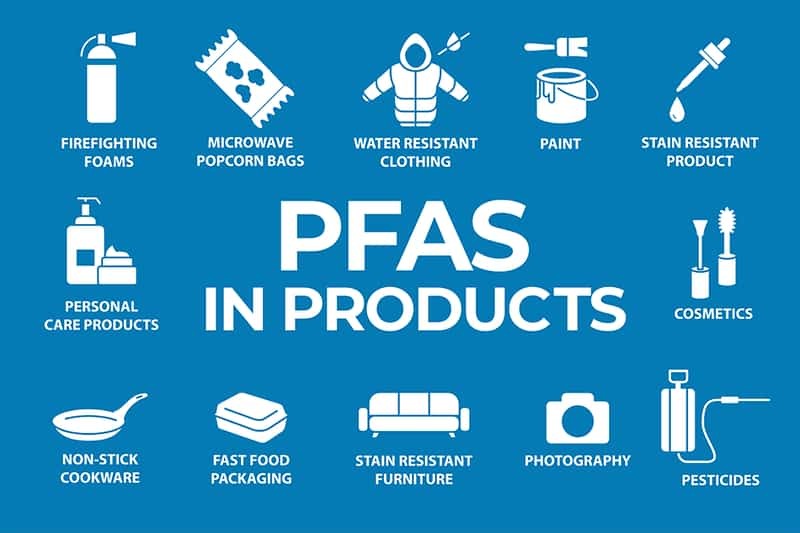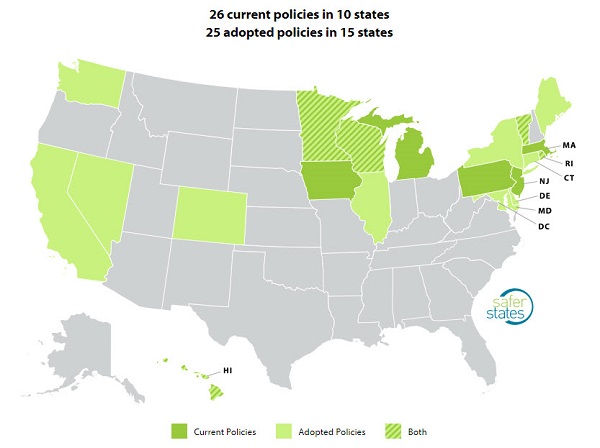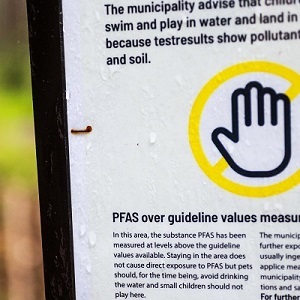In this article, we'll cover:
- What Is PFAS?
- Why Are PFAS Chemicals Used?
- What Products Contain PFAS?
- What Is The Concern About PFAS?
- What Is Being Done To Stop The Use Of PFAS?
- Where is There Legislation Specific to PFAS in Food Packaging?
- How Do I Know If Food Packaging is free of Intentionally Added PFAS?
Since 2009, Good Start Packaging has been committed to offering sustainable packaging, helping our clients grow, and bettering our world. As a business, we made it a priority and have successfully transitioned away from PFAS in molded fiber products.
We have been consistent in urging manufacturers to offer PFAS-free replacements for fiber-based food packaging. Because of this influence, we were one of the first suppliers to offer a comprehensive collection of PFAS-free fiber food containers and are proud to be a PFAS-Free Packaging supplier. Note that the PLA, bamboo, cellophane, paper, and NoTree paper packaging items we carry are also PFAS-free.
What Is PFAS?
Per- and polyfluoroalkyl substances (PFAS) refer to a family of thousands of manufactured chemicals that have been used in consumer, commercial, and industrial products worldwide since the 1940s. PFAS molecules have a chain of strongly linked carbon and fluorine atoms which do not degrade easily in the environment.
Why Are PFAS Chemicals Used?
PFAS substances are great at repelling things, including heat, oil, stains, grease, and water. These qualities help make products and packaging leakproof, stain-proof, or non-stick.
What Products Contain PFAS?
A 2020 study identified PFAS in use across 200 different categories, including cleaning products, water-proof fabrics, nonstick cookware, carpeting, firefighting foam, ski wax, and personal care products, like shampoo, dental floss, and eye makeup. The FDA has also authorized certain PFAS for use in food packaging.

Image Source: Florida Section American Water Works Association
What Is The Concern About PFAS?
Studies have found that PFAS chemicals do not break down in the environment, can move through soils, and can contaminate drinking water sources.
According to the CDC, human health effects from exposure to low environmental levels of PFAS are uncertain. But, studies of laboratory animals given large amounts of PFAS indicate that some PFAS chemicals may affect growth, development, reproduction, thyroid function, liver function, and the immune system.
What Is Being Done To Stop The Use Of PFAS?
Currently, there are no federal regulations for PFAS. The EPA has issued advisories about specific PFAS chemicals and has proposed designating certain PFAS as hazardous substances. Additionally, certain states are putting in place their own legislation toward phasing out PFAS or banning them in certain products, including in food packaging, cosmetics and apparel. But, the transition is multi-faceted and complex.
For example, when it comes to major sources of PFAS contamination in the U.S., one of the biggest culprits has been firefighting foam (or AFFF). Congress has ordered the Department of Defense to switch to PFAS-free firefighting foam by October 2024. But, safely disposing of stockpiles of the older, fluorinated foam is a massive undertaking.
Fiber-based food packaging manufacturers have also been working on swapping PFAS out with alternatives. These substitutions need to perform by resisting grease, oils, and heat without posing their own health and environmental concerns. This change has required significant ongoing research and development.
Where is There Legislation Specific to PFAS in Food Packaging?
Eleven states have now banned or restricted PFAS in food packaging with varying future enforcement dates. California and New York's PFAS ban began 12/31/22. Maine, Washington, Vermont and Connecticut followed suit in 2023. Visit SaferStates.com to learn more.
In 2024 the following states will also enact bans: Colorado, Minnesota, Maryland and Rhode Island and Hawaii (12/31/24).

How Do I Know If Food Packaging is free of Intentionally Added PFAS?
The best way to identify food packaging free from added PFAS is to look for the below third-party certifications. These organizations thoroughly test levels of flourine to ensure there is no intentionally added PFAS or flourinated chemicals. To become certified, products cannot exceed the levels of flourinated chemicals that would be found naturally.
- Biodegradable Products Institute (BPI)
- Compost Manufacturers Alliance (CMA)
- Certified OK compost HOME by TÜV AUSTRIA
- Certified OK compost INDUSTRIAL by TÜV AUSTRIA
You can shop our collection of PFAS-Free fiber food packaging. Note that the PLA, bamboo, paper, NoTree paper, and cellophane packaging we carry is also PFAS Free. All food containers we source are FDA-approved.



